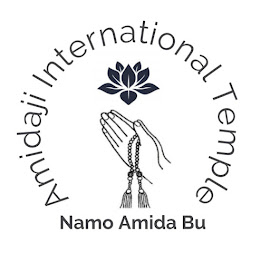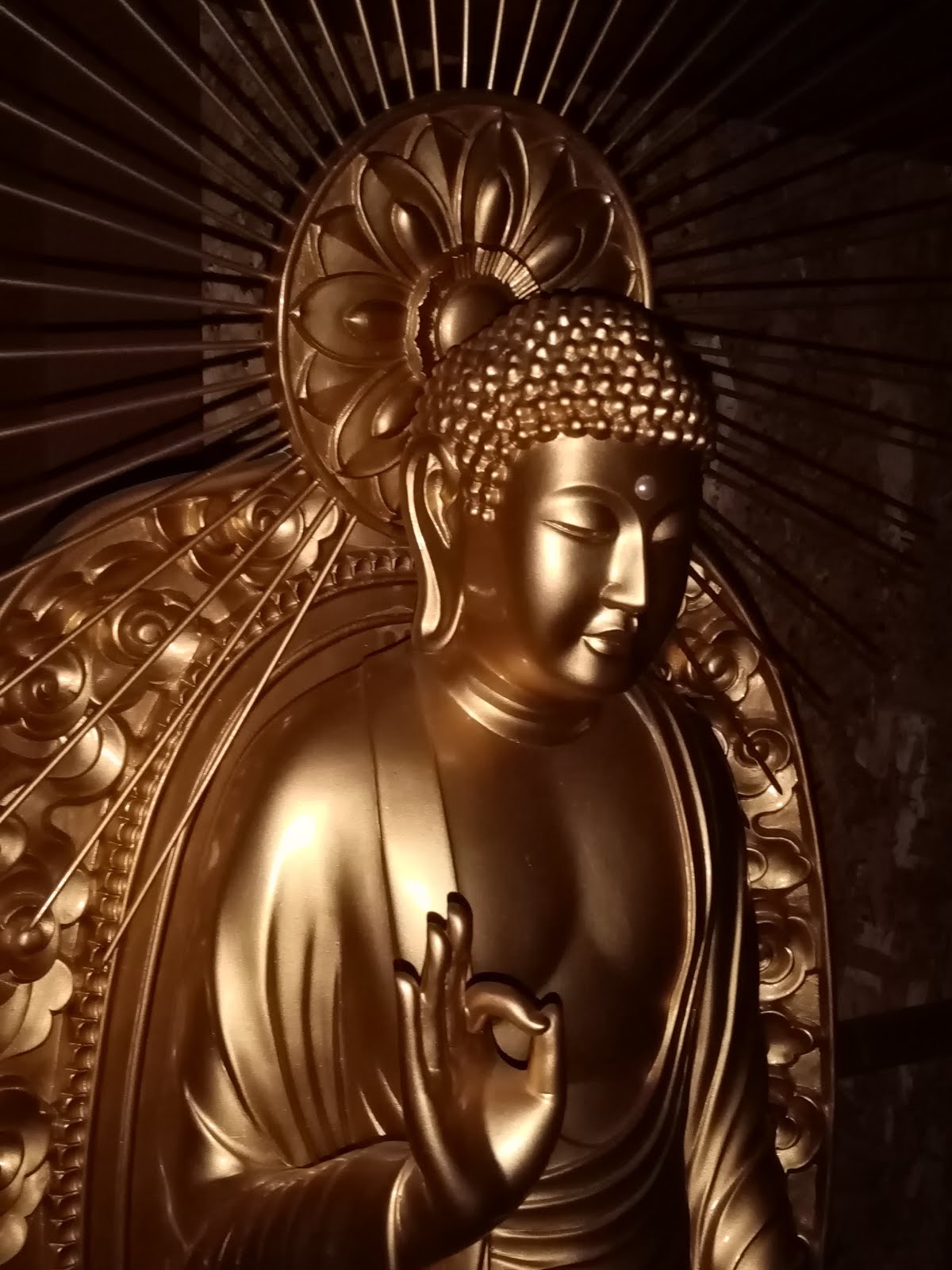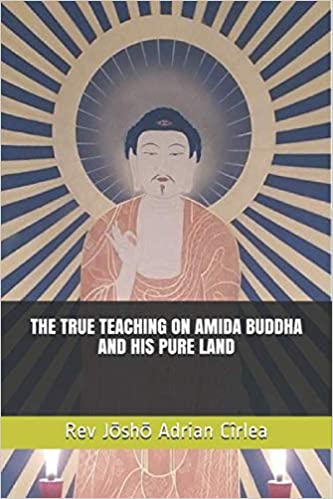If in the section 46 Shakyamuni
explained that there are many Mahayana followers (bodhisattvas in aspiration)
in various worlds who are in the stage of non-retrogression[1]
for being born in the Pure Land and attaining Enlightenment there, in section
47 He presents the causes of entering this stage:
“The Buddha said to Maitreya, ‘If there are people who hear the
Name of that Buddha, rejoice so greatly as to dance, and think of Him even
once, then you should know that they have gained great benefit by receiving
unsurpassed virtue. For this reason, Maitreya, even if a great fire were to
fill the universe of a thousand million worlds, you should pass through it to
hear this sutra, to arouse joyful faith, to uphold and chant it, and to
practice in accordance with its teachings. This is because there are many
bodhisattvas who wish to hear this teaching but are still unable to do so. If
there are sentient beings who have heard it, they will attain the stage of
non-retrogression for realizing the highest Enlightenment. This is why you
should singleheartedly accept in faith, uphold, and chant this sutra, and
practice in accordance with its teachings.’”[2]
Before
commenting on the above passage we must bear in mind that in this sutra
Shakyamuni presents just one of the two paths of entering the stage of
non-retrogression, that is, through faith in Amida. The Larger Sutra is, so to speak, the sutra of the Easy Path of
entering the stage of non-retrogression for those who make the Mahayana aspiration
to attain Buddhahood for themselves and all beings (bodhisattvas in
aspirations).
Arya Nagarjuna also
explained the difference between the two ways of entering this stage:
“There are two paths by which bodhisattvas reach the
stage of non-retrogression: the Path of Difficult practice is a way of trying
to reach the stage of non-retrogression in the period of the five defilements
when no Buddha dwells in the world. It is difficult to follow this path. [...]
The Path of Difficult Practice is, therefore, like an overland journey
painstakingly made on foot.
The Path of
Easy Practice is followed by aspiring to be born in the Pure Land through faith
in Amida Buddha and attaining birth in His Pure Land by the power of His Vows.
[...] The Path of Easy practice is, therefore, like a pleasant journey on
water.”[3]
As we have seen in the first passage of
section 47 and in the quote from Nagarjuna, it is faith in Amida and not
personal achievements, that is the cause of entering the stage of
non-retrogression on the Path of Easy Practice.
“If there are people who hear the Name of that Buddha, rejoice
so greatly as to dance, and think of Him even once, then you should know that
they have gained great benefit by receiving unsurpassed virtue.”
To
hear the Name is not an ordinary hearing without any consequences, but a hearing
with faith. Shinran Shonin explained this in many of his writings,
"Hearing
the inconceivable selected Primal Vow and the holy Name of supreme wisdom
without a single doubt is called true and real shinjin (faith); it is also
called the diamondlike mind. When sentient beings realize this shinjin, they
attain the equal of perfect Enlightenment and will ultimately attain the
supreme Enlightenment, being of the same stage as Maitreya[4],
the future Buddha. That is, they become established in the stage of the truly
settled. Hence shinjin is like a diamond, never breaking, or degenerating, or becoming
fragmented; thus, we speak of "diamondlike shinjin".[5]
"'Hear
the Name': is to hear the Name that embodies the Primal Vow. "Hear"
means to hear the Primal Vow and be free of doubt. Further, it indicates
shinjin (faith)".[6]
"Shinjin
(faith) is hearing the Vow of the Tathagata and being free of doubt".[7]
"'Entrusting'
is to be free of doubt, believing deeply and without any double-mindedness that
the Tathagata's Primal Vow is true and real."[8]
To
hear about the message of Amida’s Primal Vow were saying of His Name in faith
is mentioned (“if you entrust yourself
to me, say my Name and wish to be born
in my land, you will indeed be born there”) and to trust in His promise, means to have faith in Him or hear His Name in faith. To “think on Him even once” is equal with saying His Name even once
and is referring to Amida’s assurance that there is no set number of times one must say Nembutsu or think to Him.
“Rejoice so greatly as to dance” does not actually
mean that a person of faith always jumps in the air and feels great happiness in
every minute of his everyday life, but that he knows the burden of attaining
perfect Enlightenment and freedom from birth and death has been taken off his
shoulders by Amida. Anybody who carries a great burden
is happy when that is taken away from him, so you can be happy or feel relief
when you first entrust to Amida Buddha, if attaining Buddhahood or final
liberation from birth and death is the most important matter for you. However,
this doesn’t mean that from hour to hour, minute to minute, second to second,
you will think about Amida or feel a continuous joy as to jump in the air. Our
lives are in such a way that we can always be overwhelmed by daily problems and
worries. The joy of faith is not worldly happiness but rather a spiritual
relief of knowing that no matter what happens into your life, you are assured
of birth in the Pure Land and that this is your last life as a samsaric being.
As Shinran said:
„'Joy' (kangi): means to rejoice beforehand at being
assured of attaining what one shall attain.”[9]
Rennyo
also said:
“When faith is settled we rejoice,
knowing that birth in the Pure Land is assured.”[10]
Even if our
every day sorrows, difficulties and attachments cover the sky of faith, we know
deep inside that we are assured of Amida’s salvation and that the suffering of
samsara will not last long for us anymore. As Shinran said:
„The
clouds and mists of greed, desire, anger, and enmity
Continually
cover the sky of true faith;
Yet,
just as the sunlight is obstructed by clouds or mists,
Below
them it is light and there is no darkness.”[11]
The
light behind the clouds is knowing and being glad that our time in the samsaric
prison will soon be over.
Also
to “hear the Name” is equal with to “hear this sutra” as both are done on
the basis of “joyful faith” or the faith
mind who knows that this is one’s last life as a prisoner in samsara. “This sutra” is Shakyamuni’s teaching on
Amida Buddha as expressed in the Larger
Sutra. His urge to listen and accept this teaching and sutra in faith is
overwhelming:
“Even if a great fire were to
fill the universe of a thousand million worlds, you should pass through it to
hear this sutra, to arouse joyful faith, to uphold and chant it, and to
practice in accordance with its teachings”.[12]
Those
who hear this sutra and the Name of Amida, that is, if they entrust to
Shakyamuni’s teaching on Amida Buddha and come to be in accord with His Primal
Vow which is the essence of the sutra, thus saying Amida’s Name in faith even
once, will “gain great benefit by
receiving unsurpassed virtue”.
The
“great benefit” is entering the stage of non-retrogression for the attainment of Nirvana or perfect Enlightenment in the Pure Land. The “unsurpassed virtue”
is Amida’s transference of merits[13]
to them which actually makes possible their entering into this stage in the present
life and birth into the Pure Land after death.
Shinran also said:
"Those
who, hearing Amida Buddha's Name,
Rejoice in it with reverence and praise,
Receive its treasure of virtues;
The great benefit acquired with one utterance is supreme".[14]
Rejoice in it with reverence and praise,
Receive its treasure of virtues;
The great benefit acquired with one utterance is supreme".[14]
“When
sentient beings of this evil world
of the five defilements[15]
Entrust themselves to the selected Primal Vow,
Virtues indescribable, inexplicable, and inconceivable
Fill those practitioners."[16]
of the five defilements[15]
Entrust themselves to the selected Primal Vow,
Virtues indescribable, inexplicable, and inconceivable
Fill those practitioners."[16]
Right
after urging us to “hear this sutra, to arouse joyful faith, to
uphold and chant it, and to practice in accordance with its teachings”, Shakyamuni mentions that there are
Mahayana followers (bodhisattvas in aspiration) who are unable to have this
faith or to hear it with faith:
“There are many bodhisattvas who
wish to hear this teaching but are still unable to do so.”
However,
those who have faith in His teaching about Amida Buddha as expressed in the Larger Sutra (who hear the teaching with
faith) are assured of entering the stage of non-retrogression for the
attainment of the highest, perfect Enlightenment in the Pure Land:
“ If there are sentient beings
who have heard it, they will attain the stage of non-retrogression for
realizing the highest Enlightenment. This is why you should singleheartedly
accept in faith, uphold, and chant this sutra, and practice in accordance with
its teachings.”
Insisting
further on the importance of not having any doubt about the contents of this
sutra, Shakyamuni said:
“The Buddha further said, ‘I have
expounded this teaching for the sake of sentient beings and enabled you to see
Amitayus (Amida) and all in His land. Strive to do what you should. After I
have passed into Nirvana, do not allow doubt to arise.”[17]
The
first sentence shows the universal goal of this sutra, which is to help “sentient beings” everywhere and in any
circumstance, without any discrimination regarding their personal capacities,
to attain freedom from birth and death. In order to do this, He enabled the
audience on Vulture Peak where the sutra was taught, to see Amida and His Pure Land. Why did He do that? Because He wanted them to act as witness to future generations for the real existence of Amida and His Pure Land. If Amida and His Pure Land were just symbols and
metaphors for more subtle teachings, He would not make this effort of showing
them to the audience. However, this vision or revelation of Amida and His Pure
Land plays a crucial role in the teaching of this sutra, together with the story
of Dharmakara becoming Amida, the detailed description of the enlightened qualities
of the Land and its inhabitants, etc. Nothing is by chance in the Larger Sutra and all its elements have
the intention of helping us to accept in faith the salvation offered by Amida
in His Primal Vow. Because Amida is real, we can have faith in Him and say His
Name. Because His Pure Land is also real and filled with so many enlightened manifestations,
we can aspire to be born there after death.
So great is the
importance of Amida Dharma and the Larger Sutra, that Shakyamuni
promised to keep it in the world even after all the other sutras would
disappear:
“In the future, the Buddhist scriptures
and teachings will perish. But, out of pity and compassion, I will especially
preserve this sutra and maintain it in the world for a hundred years more.
Those beings who encounter it will attain deliverance in accord with their
aspirations[18]”.[19]
Shinran
commented on this,
"In
the future, the sutras will all disappear;
The Larger Sutra alone is designed to remain a hundred years thereafter.
How can one vacillate in doubt over the great Vow expounded in this sutra?
Simply entrust yourself to Shakyamuni’s true words!"[20]
The Larger Sutra alone is designed to remain a hundred years thereafter.
How can one vacillate in doubt over the great Vow expounded in this sutra?
Simply entrust yourself to Shakyamuni’s true words!"[20]
How can one dare
to say this sutra does not contain the true teaching on Amida Buddha, when
Shakyamuni himself said that even if the universe is on fire, we should by all
means, accept it in faith, and that He will keep it in the world even more than
other sutras? When all the Masters of our lineage accepted it, how can we do otherwise? However, Shakyamuni foresaw the inner
difficulties of accepting this sutra:
“The
Buddha said to Maitreya, ‘It is difficult to encounter and behold a Tathagata (Buddha)
when He is in this world. Difficult to access, difficult to hear are the
Buddhas’s teachings and scriptures. It is also difficult to hear the excellent
teachings for bodhisattvas, the paramitas[21].
Difficult too is it to meet a good teacher, to hear the Dharma, and perform the
practices. But most difficult of all
difficulties is to hear this sutra, have faith in it with joy, and hold fast to
it. Nothing is more difficult than this.”[22]
To be born in human form is
difficult, to meet a Buddha in flesh and bones is difficult, to come in contact
with Shakyamuni’s teachings even in our age is also difficult as there are many
places on this planet where there are no Buddhist temples or if they exist, many
are corrupted by wrong views. To understand and practice the moral teachings of
the Mahayana (the six paramitas, the bodhisattva precepts, etc) as well as the
various Dharma gates of self-power is also difficult, and to meet true teachers
of any lineage is rare in our world filled with charlatans. But most difficult
is to hear and entrust to the teaching of the Larger Sutra (Amida Dharma), have faith in Amida without clinging
to one’s so-called power, say exclusively His Name and wish to be born in His
Pure Land.
The Pure
Land is easy to go because it is attainable through Amida’s Power, but few
actually go there as most of the Buddhist followers cling to their own power. Shakyamuni himself
said in section 31 of this sutra that “the Pure Land is easy to
reach, but very few actually go there”. Commenting on
this, Master Rennyo also said,
“The
Pure Land – how easily we go there! Hence the Larger Sutra teaches: ‘Going is
easy, and yet no one is born there’. This passage means that when we realize
the settled mind (faith) and rely steadfastly on Amida, it is easy to go to the
Pure Land; but because those who receive faith are rare, although it is easy to
go to the Pure Land, very few are born there.”[23]
Shinran Shonin said:
"The
Great Sage Sakyamuni teaches
That Amida's land is easy to reach,
And calls the sentient being who doubts the Pure Land path
A person lacking eyes, or lacking ears".[24]
That Amida's land is easy to reach,
And calls the sentient being who doubts the Pure Land path
A person lacking eyes, or lacking ears".[24]
Master Shan-tao said:
"To
be able to hear the rare Dharma
Is
among the most difficult.
To
accept it in faith and teach others to believe in it
Is
the difficulty among all the difficulties."[25]
It is extremely
important to understand that Amida Dharma is what Shakyamuni expounded and
taught. This is why He said at the end of the Larger Sutra: “thus have I formed my
Dharma, thus have I expounded my Dharma, thus have I taught my Dharma”[26].
It means, “Dear disciples, do not let yourself drawn into confusion! This is
the Dharma you should accept in the exact way I myself formed it and expounded
it”. This is also evident from the next sentence: “you must receive it and
practice it by the method prescribed”[27].
Attention, dear
readers – Shakyamuni said we must receive it and practice it in the
way it was taught. Not to change it like we are some kind of owners of the
Dharma or enlightened beings ourselves. So please, do not approach the Amida
Dharma with a possessive mind, but with the humbleness of receiving the most
precious medicine.
[1] This is
also called the stage of the truly settled, the stage of definite assurance,
the group of the rightly established stage, the stage equal to perfect Enlightenment,
the stage equal with Maitreya, etc.
[2] The
Three Pure Land Sutras - A Study and Translation from Chinese by
Hisao Inagaki in collaboration with Harold Stewart, Bukkyo Dendo Kyokai and
Numata Center for Buddhist Translation and Research, Kyoto, 2003, p.69-70
[3] This
passage was quoted by Master T’an-luan from Nagarjuna’s Discourse on the Ten Stages in Ojoronchu
– T’an-luan’s Commentary on Vasubandhu’s Discourse on the Pure Land,
translated by Hisao inagaki, Nagata Bunshodo, Kyoto, 1998, p. 121.
[4] This is related to the
provisional way of reffering to Maitreya (see chapter 2), as somebody who will surely
become a Buddha. Ordinary people who have faith in Amida are in the same stage
as Maitreya in the sense that we are also assured of becoming Buddhas in the
next life with the difference that we don’t need to wait bilions of years like Him
and that we entered this stage through the Power of Amida.
[5] Shinran Shonin, Notes on the Essentials of Faith Alone,The Collected Works of
Shinran, Shin Buddhism Translation Series, Jodo Shinshu Hongwanji-ha,
Kyoto, 1997, p.454-455
[6] Shinran Shonin, Notes on Once-calling and Many-calling, The Collected Works of
Shinran, Shin Buddhism Translation Series, Jodo Shinshu Hongwanji-ha,
Kyoto, 1997, p.474
[7] Shinran Shonin, Notes on Once-calling and Many-calling, The Collected Works of
Shinran, Shin Buddhism Translation Series, Jodo Shinshu Hongwanji-ha,
Kyoto, 1997, p.474
[8] Shinran Shonin, Notes on the Inscriptions on Sacred Scrolls, The Collected Works
of Shinran, Shin Buddhism Translation Series, Jodo Shinshu Hongwanji-ha,
Kyoto, 1997, p.493
[9] Shinran Shonin, Notes on Once-calling and Many-calling, The Collected Works of
Shinran, Shin Buddhism Translation Series, Jodo Shinshu Hongwanji-ha,
Kyoto, 1997, p.474
[10] Rennyo Shonin Ofumi: Letters of Rennyo,
Numata Center for Buddhist Translation and Research, Berkeley, California,
1996, p.64
[11] Kyogyoshinsho
– On Teaching, Practice, Faith, and Enlightenment, chapter II, translated by Hisao Inagaki, Numata Center for
Buddhist Translation and Research, Kyoto, 2003, p. 76-77
[12] The Three Pure Land Sutras - A
Study and Translation from Chinese by Hisao Inagaki in collaboration with
Harold Stewart, Bukkyo Dendo Kyokai and Numata Center for Buddhist Translation
and Research, Kyoto, 2003, p.69-70
[13] In the practices based on personal power
the practitioner “earns” virtues which he transfers for his own Enlightenment.
But in the case of Other Power (Pure Land) way, the transference of
merits takes place from Amida Buddha to those who entrust to Him.
This transference of merit (eko) carries the follower to the Pure Land where he
attains Nirvana or perfect Enlightenment.
The merit transference from Amida to the practitioner has two aspects:
The merit transference from Amida to the practitioner has two aspects:
1) the merit
transference of going forth (Oso-Eko) and
2) the merit
transference of returning to this world (Genso-Eko) .
The first refers
to the fact that through Amida's transference of merit we go to His
Pure Land where we become Buddhas, while the second one means that after
we become Buddhas in the Pure Land by sharing the same Enlightenment as Amida, we
return to the various samsaric realms and universes, to save all beings.
[14] Shinran Shonin, Hymns of the Pure Land (Jodo Wasan), The Collected Works of Shinran, Shin
Buddhism Translation Series, Jodo Shinshu Hongwanji-ha, Kyoto, 1997, p.332
[15] The five defilements are the five marks of
decay of the world we live in: 1) the defilement of views, when incorrect,
perverse thoughts and ideas are predominant, 2) the defilement of passions,
when all kinds of transgressions are exalted, 3) the defilement of human
condition, when people are usually dissatisfied and unhappy, 4) the defilement
of life-span, when the human life-span as a whole decreases – according to the
sutras, when it is less or close to one hundred years, 5) the defilement of the
world-age, when war and natural disasters are rife.
[16]Shinran Shonin, Hymns of the Dharma Ages, The Collected Works of Shinran, Shin
Buddhism Translation Series, Jodo Shinshu Hongwanji-ha, Kyoto, 1997, p.406
[17] The
Three Pure Land Sutras - A Study and Translation from Chinese by
Hisao Inagaki in collaboration with Harold Stewart, Bukkyo Dendo Kyokai and
Numata Center for Buddhist Translation and Research, Kyoto, 2003, p.70
[18] “In accord with their aspirations” -
according with the Mahayana aspiration to become a Buddha for oneself and all
beings.
[19] The
Three Pure Land Sutras - A Study and Translation from Chinese by
Hisao Inagaki in collaboration with Harold Stewart, Bukkyo Dendo Kyokai and Numata
Center for Buddhist Translation and Research, Kyoto, 2003, p.70
[20] Shinran Shonin, Shoshinge, The Collected Works of Shinran, Shin Buddhism
Translation Series, Jodo Shinshu Hongwanji-ha, Kyoto, 1997, p.306
[21] The six paramitas (perfections) that a
bodhisattvas in aspiration who relies on his own power is expected to develop
are: 1.charity/generosity (dana) 2. discipline and proper behaviour (sila)
3. perseverance (ksanti) 4. diligence 5.
meditation (dhyana) and 6. higher wisdom (prajna).
[22] The
Three Pure Land Sutras - A Study and Translation from Chinese by
Hisao Inagaki in collaboration with Harold Stewart, Bukkyo Dendo Kyokai and
Numata Center for Buddhist Translation and Research, Kyoto, 2003, p.70
[23] Slightly
changed passage from Rennyo Shonin Ofumi:
Letters of Rennyo, Numata Center for Buddhist Translation and Research,
Berkeley, California, 1996, p.42
[24] Shinran Shonin, Hymns of the Pure Land (Jodo Wasan), The Collected Works of
Shinran, Shin Buddhism Translation Series, Jodo Shinshu Hongwanji-ha,
Kyoto, 1997, p.350
[25] Master Shan-tao quoted by Shinran in
Kyogyoshinsho, III, Kyogyoshinsho – On Teaching, Practice, Faith, and
Enlightenment, translated by Hisao Inagaki, Numata Center for Buddhist
Translation and Research, Kyoto, 2003, p. 129
[26] The
Three Pure Land Sutras - A Study and Translation from Chinese by
Hisao Inagaki in collaboration with Harold Stewart, Bukkyo Dendo Kyokai and
Numata Center for Buddhist Translation and Research, Kyoto, 2003, p.70
[27] The
Three Pure Land Sutras - A Study and Translation from Chinese by
Hisao Inagaki in collaboration with Harold Stewart, Bukkyo Dendo Kyokai and
Numata Center for Buddhist Translation and Research, Kyoto, 2003, p.70


























0 comentarii:
Post a Comment